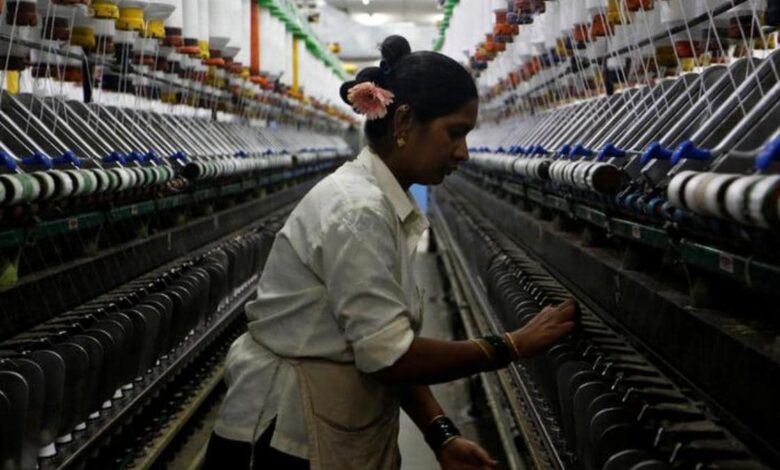Why are women missing in India’s labour force?

According to the World Bank India’s labour force participation rate is at just around 48% in the year 2021. When we break it down to gender-specific labour force participation. Men’s participation is at 75% whereas women’s labour force is at nearly 21%.
It is not even comparable with our neighbors who have similar economies. Nepal has a women participation rate of about 81%, Myanmar has about 47%, China is rising at 61%, and Bhutan at 60%.
Both Pakistan and Afghanistan though their numbers are questionable have a single point advantage over us at 22%.
What are the causes behind India’s low labour force participation of women?
Educational gaps, gender pay gap, and the quality of jobs women do form a major part of this conversation.
In India the enrollment rates are high but the dropout rates are also high.
Nearly 40% of 15-18 above girls are out of school 65% of them are engaged in housework. Job opportunity increases for women after completing secondary education however most women drop out after completing primary education.
Women do 9.8 times more household work than men. The work done by women at home is the unpaid care work which does not get counted in the paid economy
Some researchers call it the ‘reproductive economy’ or even the ‘hypocrisy economy’. In this women are allowed to work but the expectations from them continue to be the same in terms of caring responsibilities of childcare, eldercare as well as managing household.
This means women’s engagement in the care economy. Various structural barriers remain, they continue doing unpaid labour and in places, they get employment the quality of work remains questionable.
Where do women work?
Women tend to be employed in lower productivity jobs. They are not given jobs that use their productivity and skills. The World Bank, notes women occupy jobs that don’t actually impact the economy. They are segregated into jobs that don’t provide or create output that adds value to the economy. These segregations manifest because women have to work at home, there is unequal access to information and credit
Fall in women’s labour force in rural areas indicates a lack of non-farm opportunities. As the share of agriculture is declining due to increasing education, women are not able to get jobs in other sectors.
For example, a man after completing 10th might find employment in informal sectors like becoming a mechanic, electrician, driver, etc similar opportunities for women with the same education qualifications do not exist.
Women tend to jump in and out of the workforce because of this idea that man is the breadwinner and therefore women take up jobs that are less productive or are compatible with the other household chores.
What are the challenges?
The U-shaped hypothesis suggests that when a country is poor, women work out of necessity in sectors like agriculture and as the country progresses they fall out of the labour force. With the decrease in fertility rates, socio-cultural norms change towards their participation they find themselves employed in the service sector. However Indian economy shows a more complex picture.
Also, there are returning moms ready to work again maybe not physically but from a place, they are comfortable with however the organizational structure is not ready yet.
The underwhelming situation of women pursuing higher education shows systematic issues. It’s high time to solve these issues.
We see women from privileged backgrounds are somewhat able to break through this barrier.
For the first time this year, Wharton announced that an MBA class had more women than men. It took so many years in history for a class to have 52% women.
There are also structural challenges for women entrepreneurs. There is a lot of potentials and effort in this aspect in terms of leadership and access to finance.
Though we do require an overhaul on how we think but apart from these larger measures we also need smaller measures to ensure that the larger changes are effective.
Our socio-cultural norms are stopping us and creating another ceiling that we need to surpass once we achieve our education level.
As a result, this deep-rooted unconscious bias is nurturing to the next generation with little dilution in the social fabric.
How does women’s workforce impact our economy?
By adding 10% to the female participation India could add 770 billion dollars to the GDP by 2025, which would help create a sustainable economy. When women enter the workforce wages rise and GDP also rises. Research shows that female entrepreneurs tend to create more jobs than male entrepreneurs. Women are a substantial part, they are 50% of our population. It is unfair to stop them from achieving what they can, given the means to do so.
More women in the workforce mean increased profits and stability of the economy. It widens the scope of innovation and boosts the economic growth of a country.
What is the way forward?
It is necessary to recognize that women are not a homogeneous group, they have different identities and socio-economic statuses. Many of them are venerable and marginalized in this patriarchal society.
We know that our social norms will not change overnight. Women will continue to engage in the household work. Therefore we need to take the jobs to them. Create more jobs in areas that are semi-urban as more upskilling opportunities are in those areas.
Policymakers should promote Gender-neutral policies.
Better policies and equitable laws together with a diversity of jobs and better quality of jobs is the foundational step for making our country a place for women to work.
Safety concern at the workplace along with safety while getting to the workplace is centric to make employment more conducive to women.
More representation of women in the decision-making process is the need of the hour.
We need to continue talking about it, we can do a lot more by giving a voice to the marginalized. As to include them in the conversation
At the end of the day… who run the world? Girls!!
Read more at: https://akashbaani.com/why-did-china-ban-yet-another-social-networking-app-linkedin/





